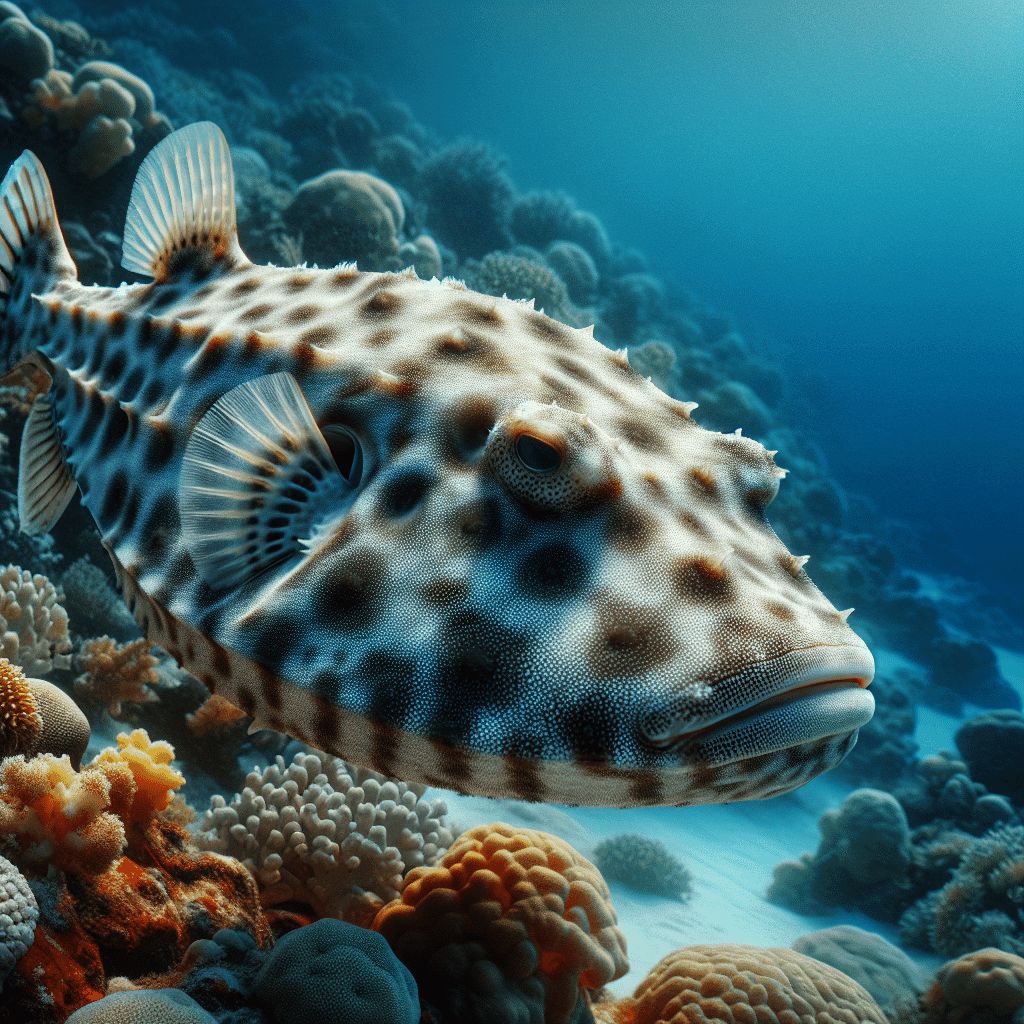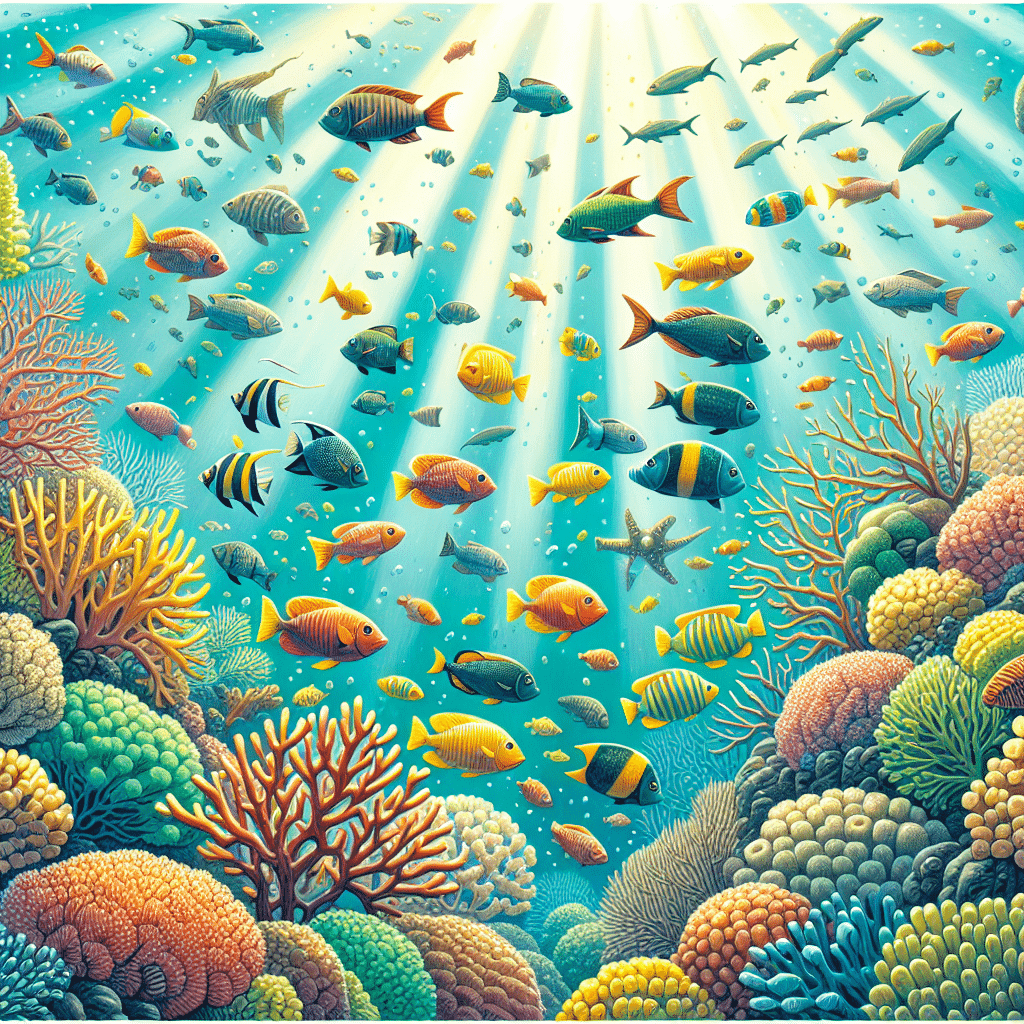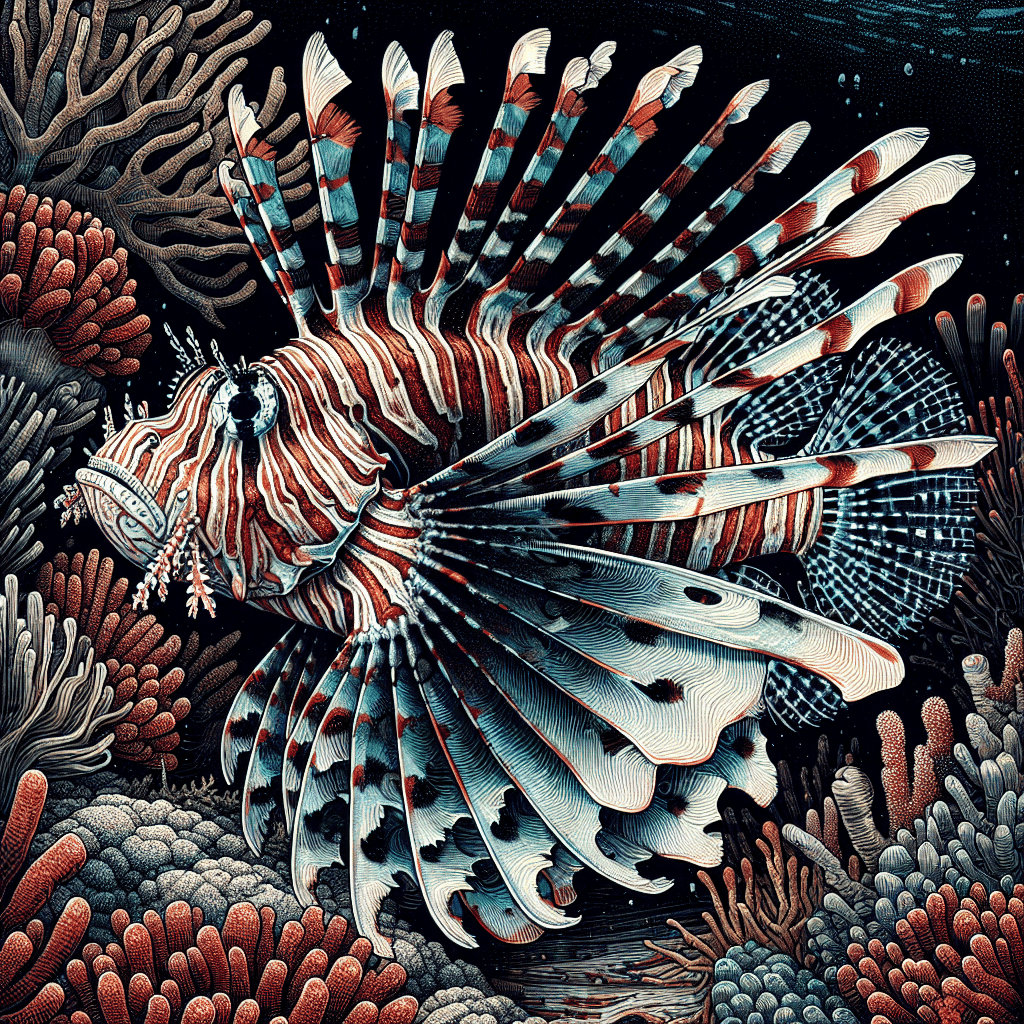Discovering Filefish
Characteristics and Behavior
Filefish are fascinating creatures, known for their unique ability to change color and pattern to blend in with their surroundings. This talent makes them masters of camouflage, allowing them to avoid predators in their natural habitats (SeaWorld). Their behavior is equally interesting; filefish often spawn at bottom sites that are prepared and guarded by males. Depending on the species, both males and females may take turns guarding the brood, while the young filefish are pelagic, spending time in open water.
Additionally, some species of filefish are closely associated with dense mats of sargassum, a common type of seaweed. They are colored and patterned to match these weedy environments, which further aids in their camouflage. This close relationship with their habitat not only provides them with protection but also influences their feeding habits and social interactions (Wikipedia).
Filefish Family Overview
The filefish family includes a variety of species, each showcasing a range of colors and behaviors. These fish are characterized by their flattened bodies and unique dorsal fins, which can be raised or lowered. While some filefish can be found in shallow waters, others inhabit deeper regions, adapting to their specific environments.
Here’s a quick overview of some notable species in the filefish family:
| Species Name | Common Name | Notable Traits |
|---|---|---|
| Scrawled Filefish | Scrawled Filefish | Masters of camouflage with disruptive markings |
| Thread-sail Filefish | Thread-sail Filefish | Known for their elongated dorsal fin |
Filefish are not just striking in appearance; their adaptations allow them to thrive in various marine environments. As an aquarium hobbyist, understanding their behavior and characteristics is essential for creating a suitable habitat. For more information on maintaining and caring for filefish in your tank, check out our resources on marine fish.
Habitat and Distribution
Natural Environments
Filefish thrive in various natural environments, primarily found in the Atlantic, Pacific, and Indian Oceans. These fascinating creatures are often spotted in shallow coastal areas, coral reefs, and seagrass beds. They enjoy habitats where they can easily hide and blend in with their surroundings, thanks to their remarkable ability to change color and pattern for camouflage.
Their preference for these environments helps protect them from predators and allows them to access their primary food sources, which include benthic algae and sea grasses. Filefish are part of the herbivorous group of marine fishes, feeding on various plant materials that flourish in these habitats.
Geographic Distribution
Geographically, filefish are widespread, with a significant number of species residing in Australian waters. Approximately 58 species belong to 23 genera found in this region alone. Overall, the filefish family comprises around 102 species in 27 genera, highlighting their diverse presence across different marine ecosystems.
| Ocean | Number of Filefish Species |
|---|---|
| Atlantic | Varies by region |
| Pacific | Varies by region |
| Indian | Varies by region |
| Australian Waters | 58 species in 23 genera |
Filefish can be found in both tropical and temperate waters, but they tend to be more prominent in warmer climates. Their unique spawning behavior also contributes to their distribution, as they prepare and guard bottom sites for their young (Wikipedia). Understanding their habitat and geographic distribution is essential for anyone interested in keeping filefish in their reef tanks, as it helps create a suitable environment that mimics their natural living conditions.
Physical Features
Color-Changing Abilities
One of the coolest things about filefish is their incredible ability to change color and pattern. They are masters of camouflage, allowing them to blend seamlessly into their surroundings. This skill is not just for show; it helps them avoid predators. I’ve seen filefish change their skin coloration to match the habitat they’re in, making it hard to spot them.
These color changes can include disruptive markings that can conceal their eyes with dark lines running through them. It’s a clever trick that helps them stay safe in the wild. Plus, some species even have horizontal lines that serve as sight-lines for aiming at prey, showcasing their unique adaptations for survival.
| Color-Changing Feature | Description |
|---|---|
| Camouflage | Blends in with surroundings to avoid predators |
| Disruptive Markings | Dark lines help hide eyes from threats |
| Horizontal Lines | Aids in targeting prey |
Unique Adaptations
Filefish also have body shapes that mimic their natural habitats, which is another layer of their camouflage strategy. This adaptation not only helps them hide but also makes them look like part of the reef, which can be beneficial when they’re in a habitat full of corals and other textures.
These unique features make filefish fascinating additions to any reef tank. Understanding their physical traits can definitely help in providing the best care for them. If you’re considering adding a filefish to your aquarium, it’s good to know how these adaptations affect their behavior and interaction with other marine life. Don’t forget to check out our articles on other marine fish and their care!
Feeding Habits
Herbivorous Diet
Filefish belong to a herbivorous group of marine fishes, which also includes species like parrotfish, damselfishes, and surgeonfishes. They primarily feed on benthic algae, sea grasses, and other plant materials. It’s interesting to note that herbivory is more pronounced in tropical marine fishes compared to those in temperate regions.
While filefish are often categorized as herbivores, they are actually opportunistic omnivores. Their diet consists of algae, benthic invertebrates, and various marine organisms. They may consume everything from macroalgae to snails and even sea urchins. This diverse diet makes them adaptable, but it also means they might munch on some corals and invertebrates in a reef tank setting.
| Food Type | Examples |
|---|---|
| Algae | Benthic algae, coralline algae |
| Invertebrates | Shrimp, snails, bivalves |
| Marine Organisms | Sea urchins, polychaete worms |
Feeding in Reef Tanks
When keeping filefish in a reef tank, it’s crucial to understand their feeding habits. While they can help control algae growth, some species may pose risks to delicate corals and small invertebrates. For instance, certain filefish, like the orange-spotted filefish, are known to feed extensively on stony coral polyps (TFH Magazine).
Given their opportunistic feeding nature, I recommend providing a varied diet to keep them healthy and reduce the likelihood of them targeting your prized corals. Here are some dietary needs and feeding tips:
- Offer a mix of algae-based foods and high-quality pellets or flakes designed for herbivores and omnivores.
- Include fresh or frozen foods like mysis shrimp and brine shrimp to enhance their diet.
- Monitor their feeding habits to ensure they’re not over-consuming certain types of invertebrates.
For more insights on how to care for your fish, check out our articles on marine fish and specific species like clownfish and tang.
Filefish Species
In my journey of exploring filefish, I’ve come across two fascinating species that stand out: the Scrawled Filefish and the Thread-sail Filefish. Each has its own unique characteristics and behaviors which make them interesting additions to any reef tank.
Scrawled Filefish
The Scrawled Filefish, scientifically known as Aluterus scriptus, is the largest species in the filefish family, growing up to 43 inches (110 cm) in length. Most individuals are typically less than 24 inches (60 cm) long. These beautiful fish can be found in the Atlantic, Indian, and Pacific Oceans, making them quite versatile in terms of their habitat.
| Feature | Description |
|---|---|
| Scientific Name | Aluterus scriptus |
| Max Length | 43 inches (110 cm) |
| Habitat | Atlantic, Indian, Pacific Oceans |
Scrawled Filefish are known for their striking colors and patterns, which can change depending on their environment. They primarily feed on small marine organisms and plant matter, making them a great addition to a reef tank.
Thread-sail Filefish
The Thread-sail Filefish, or Stephanolepis cirrhifer, is another intriguing species. Generally, it grows to about 12 inches (30 cm) and can be found in the western Pacific, specifically ranging from northern Japan to the East China Sea and Korea. This species is quite social; juveniles often seek shelter in clusters of drifting seaweed, whereas adults prefer residing near the seabed at depths of around 10 meters.
| Feature | Description |
|---|---|
| Scientific Name | Stephanolepis cirrhifer |
| Max Length | 12 inches (30 cm) |
| Habitat | Western Pacific, near seabed |
Thread-sail Filefish are omnivorous, enjoying a diet of kelp, amphipods, skeleton shrimp, seagrass, and various other marine organisms. They even play host to the parasite Peniculus minuticaudae. Their spawning season occurs from May to August, during which they migrate between feeding and spawning grounds, covering distances of over 100 kilometers.
Both the Scrawled and Thread-sail Filefish offer unique characteristics that make them captivating for any reef tank enthusiast. If you’re considering adding filefish to your aquarium, understanding their specific needs and behaviors is essential for providing the best care. For more information on keeping these fish, check out my articles on marine fish and feeding habits.
Care and Maintenance
Taking care of filefish in your aquarium requires attention to their specific needs, especially regarding tank size and compatibility with other species. Here’s what I’ve learned about keeping these unique fish.
Tank Size Requirements
The tank size for filefish largely depends on the species you choose to keep. For instance, the commonly kept Pervagor species can comfortably live in tanks as small as 55 to 75 gallons as adults. However, if you’re considering larger species like Cantherhines, you’ll need a much bigger tank—at least 180 gallons or larger to give them ample space to swim and thrive.
| Filefish Species | Minimum Tank Size |
|---|---|
| Pervagor spp. | 55 – 75 gallons |
| Cantherhines spp. | 180 gallons or larger |
Choosing the right tank size is crucial for the health and well-being of your filefish.
Compatibility and Disease Risks
When it comes to compatibility, filefish can be tricky. They are opportunistic feeders and may munch on invertebrates, including shrimp, crabs, and even coral polyps, making them risky additions to reef tanks where delicate invertebrates are present.
For those who already have a mixed tank setup, it’s best to proceed with caution. Filefish may not play well with other marine species, so researching their behavior and compatibility before introducing them to your tank is essential.
Additionally, filefish can carry infectious diseases like mycobacterium and salmonella. I always make it a point to wash my hands thoroughly before and after handling filefish or any items from their tank to prevent the spread of these potential pathogens (Petco).
If you have young children, pregnant women, seniors, or anyone with a weakened immune system in your home, it’s wise to consult a physician before bringing filefish into your life (Petco).
Keeping filefish happy and healthy in your aquarium requires some careful planning and knowledge about their habits. With the right tank size and compatibility considerations, I believe anyone can enjoy the unique charm these fish bring to a reef tank.
Keeping Filefish in Aquariums
Setting up an aquarium for filefish requires attention to detail. I’ve learned that replicating their natural habitat can greatly enhance their comfort and wellbeing. Here are some recommendations for creating the perfect environment and ensuring they thrive.
Tank Set-Up Recommendations
When setting up a tank for filefish, I recommend considering the following aspects:
| Feature | Recommendation |
|---|---|
| Tank Size | Minimum 50 gallons |
| Rockwork | Plenty of rocks, crevices, and hiding spots |
| Water Conditions | Salinity: 1.020-1.025, pH: 8.1-8.4, Temperature: 72-78°F |
| Filtration | Good filtration system to maintain water quality |
| Lighting | Moderate lighting; too bright can stress them |
Filefish are masters of camouflage and thrive in environments that mimic their natural habitats. I’ve noticed that incorporating lots of rockwork and hiding spots helps them feel secure. They prefer tanks with plenty of nooks and crannies to explore, so don’t skimp on the decorations.
Dietary Needs and Feeding Tips
Feeding filefish can be quite fun, as they have specific dietary preferences. Here’s a quick guide to their eating habits:
| Food Type | Description |
|---|---|
| Vegetation | They primarily eat algae and plant matter. Include nori (seaweed) in their diet. |
| Pellets | High-quality marine fish pellets can be offered as a staple. |
| Frozen Food | Include frozen mysis shrimp, brine shrimp, and other seafood to diversify their diet. |
I’ve found that providing a varied diet is crucial for their health. Filefish enjoy grazing, so I often attach nori to a feeding clip for them to munch on throughout the day. Avoid overfeeding; it’s better to give smaller portions multiple times a day.
For those interested in other marine species, consider pairing filefish with compatible tank mates like clownfish or tang. Just be cautious of potential aggression with certain species like lionfish or triggerfish.
By following these guidelines for tank setup and dietary needs, I believe filefish can thrive in your aquarium, bringing a unique charm to your reef tank.



